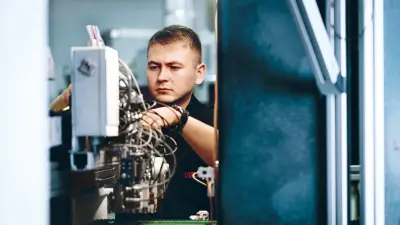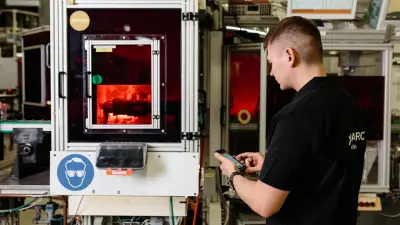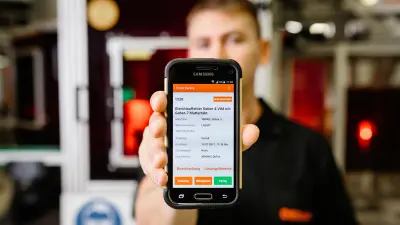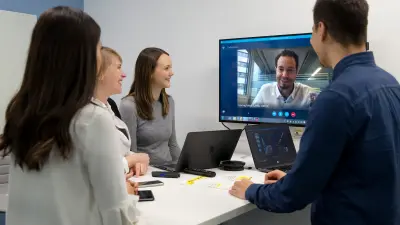Software for flexible production

Digitization is changing the working world. In fact, it is leading to a disruptive, fundamental transformation of the way we work. But what does this mean for manufacturing companies and their employees? Bosch and the lighting manufacturer OSRAM are already showing how the future of production could look.
Wanted: Smart IT
From lean production and operational excellence to Six Sigma, the OSRAM plant in Berlin has seen its share of change processes. Since it was first founded more than 100 years ago, the company has continuously improved its quality and increased its productivity. However, in 2016, Frank Sroka, a mechanical engineer and the company’s Industry 4.0 manager, had to admit that “more automation and more continuous improvement just weren’t possible anymore.”
The company continued to face several challenges: volumes fluctuated and production had to become even more flexible and efficient without compromising quality. ORSAM knew that these requirements could only be met with a smart IT solution, and found the right partner in Bosch. At the same time, Frank Sroka placed great importance on widespread acceptance of change: “We had to get everyone at the company on board. Especially with innovative projects, this is very important.”

“We must get everyone at the company on board. Especially with innovative projects, this is very important.”
One tool, one mission

Over the course of their cooperation to develop the Industry 4.0 solution, it soon became clear to Bosch and OSRAM that the project was about far more than a tool: the entire organizational structure would change because of it. The company needed a central system that would connect machines to one another and show what the next steps in the production process were. Since 2017, the Bosch Production Performance Manager software has merged data from about 80 machines, as well as harmonized and processed them. Once this has been done, the data is transmitted to a central app called the OSRAM Ticket Manager, which turns them into concrete instructions and task descriptions. Regardless of where production employees are, they can check up on the status of their machines via their work smart phones. It is thus now possible to keep abreast of where maintenance will soon be needed, where material is about to run out, or which machine is malfunctioning.
Shaping the transformation
The solution is making conventional work structures, including the hierarchy, obsolete. “The Ticket Manager is playing a decisive role in creating new structures in production,” says Frank Sroka. On the basis of data and defined threshold values, the app determines what needs to be done to ensure that production runs seamlessly. Tasks are then automatically assigned to an available employee who is qualified for the job in question. This means that OSRAM has made work task-related rather than machine-related. In the past, one employee was responsible for one machine, the status of which they monitored. Today, the workforce is flexible and each person handles a wider range of tasks.
Even though the software tool sets the tone, employees still have a say: they can either accept the task, delegate it, or involve their supervisor. While the app was being developed, they contributed to defining its rules, as they know from experience which behaviors are most appropriate in specific situations. This set of rules is revised on a regular basis in cooperation with specialists, and can be adjusted and improved flexibly.

“The Ticket Manager plays a critical role in creating new structures in production.”
Greater agility at work
To develop trailblazing solutions such as the Ticket Manager in cooperation with customers, Bosch is also continuously focusing its efforts on connecting its own internal work structures. As one of the first large companies in the world, Bosch is increasingly making use of the Working Out Loud (WOL) self-learning program. The aim is to make expertise available across divisions and hierarchical levels faster, make further training an integral part of everyday work, and ultimately improve the company’s innovative strength. For a period of twelve weeks, one in five associates meet with one another virtually once a week to work on a task they have selected themselves. The groups are free to choose how they organize themselves. The method has gained widespread acceptance: in 2017, the WOL community doubled to 2,200 associates in 45 countries.

Summary
A Bosch project for the lighting manufacturer OSRAM shows how the path to flexible production can look: all machines are connected and a Bosch software system determines what needs to be done, and informs employees accordingly in real time via their work smart phones. Bosch also applies agile methods and uses the Working Out Loud self-learning program around the world.

